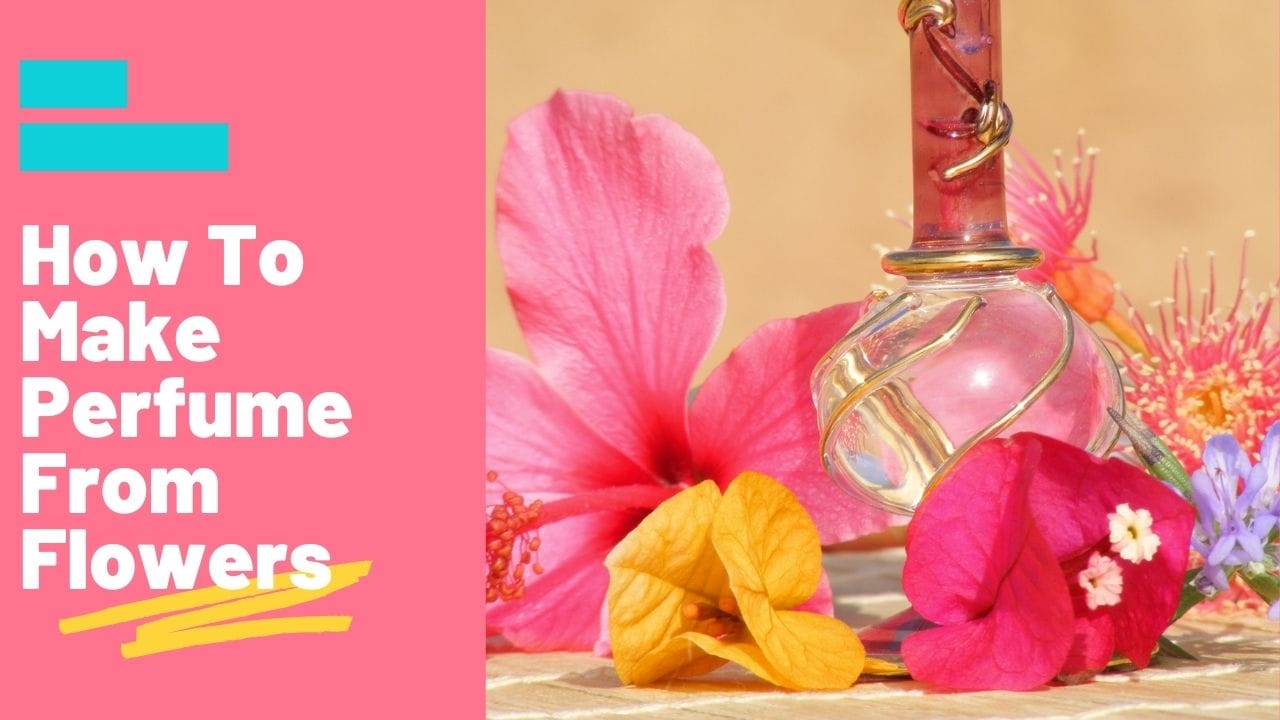How To Make Perfume From Flowers
Making your own perfume at home is a romantic idea. Even though one may feel nervous to actually get started with perfume-making from scratch, it is an exciting hobby that all of us aspire to try at least once in our lifetime.
And to burst the bubble, perfume-making is actually one the easiest things in the world. Most perfumes are no more than fragrant oils mixed with alcohol and water. So no need to get intimidated by the idea, this blog will teach you all about perfume-making from flowers at the ease of home!
So without making you wait any longer, let’s jump straight into the recipe!
We bet, the process is going to be fun, exciting, and therapeutically engulfing for your senses.
So Here We Go.
Step # 1 Picking the Flowers:
While you can choose any flower to make your own distinctive perfume fragrance, here are the top 11 flowers that are commonly used by perfume houses and are cherished by cognoscenti around the world.
- Rose
- Tuberose
- Gardenia
- Jasmine
- Lavender
- Plumeria
- Orchid
- Violet
- Honeysuckle
- Daisy
- Lily
Pick your favorite flowers that you want to smell in your perfume. You can keep the quantity singular to how many you want.
When trying for the first time, many people usually choose to make a rose-based perfume. And while it’s a safe idea to play with, we encourage you to follow your heart and try not to shy away from developing the dynamic scent of your dreams, even if it’s your first time.
Step # 2 Understanding The Perfume Body:
The perfume has several notes contained in its body. These notes are separated into three classes:
- top/head notes,
- middle/heart notes,
- and base notes
In a simpler language, these notes are ingredients that make up a fragrance but their alignment in a perfume body is what makes them classified as top, middle, and base notes.
Top Notes – The ingredients in the top notes or head notes form a top layer in your fragrance. You detect these notes foremost when you spray a perfume. They dominate the fragrance for 5 to 15 minutes. Perfumers choose to incorporate fresh, sparkly, citrusy notes on the top with ingredients such as bergamot, lemon, peppermint, eucalyptus, blood orange, rose, magnolia, and white florals. They make the perfume opens with a refreshing zest of delight and interest.
Heart Notes – Then the middle/heart notes have ingredients that appear when top notes begin to fade and they last till the end of the fragrance body. They make 70% of the fragrance so they are very important and carefully chosen.
Dense ingredients like cinnamon, rose, peony, ylang-ylang, lemongrass, neroli, lavender, Clary Sage, Sweet Marjoram, Rose, Fragonia, Geranium, Cardamom, etc are used in this part of the perfume body. When you are making perfume at home, choose to fill the heart notes of your perfume with your top favorite flower scents.
The heart notes stay in dominance for about 20-90 minutes and linger till the dry down of a perfume.
Base Notes – The base notes form the last fragrance layer in perfume and last for about 6 hours; in intimate relation with the heart notes and the nostalgia of top notes in the perfume.
The ingredients used in this part are chosen from the densest materials that are not volatile and heavy in concentration.
When you first sniff a perfume, you smell top notes, a touch of heart notes, and an underlying aroma. That underlying aroma is from the base notes. The base notes have the power to strengthen a perfume’s position or destroy it. So choosing your base notes is a very careful step.
The top favorite base notes that perfumers love to incorporate in their perfumes are as follows;
- Patchouli
- Vetiver
- Sandalwood
- Vanilla
- Rose Wood
- Amyris
- Opoponax
- Musk
- Amber
- Muhuhu
- Oud
- Tonka Bean
- Vanilla
Step # 3 Choosing Your Quantity Of Notes:
One of the steps here would be to stop and ask yourself if you want one-note-based perfume like a rose-based perfume of lavender, jasmine-based one, or with whatever flower that is your favorite.
Or if you want a multi-note perfume, in which case you will have to get top notes, middle notes, and base notes according to the guidance provided above (in step 3).
Step # 4 Making the perfume:
Choose your scents from each category of notes if you have selected to go with the multi-note perfume otherwise take one flower in your hand, pluck its petals and follow the process given below.
- Layout a cheesecloth inside an empty bowl and place your petals on top of the cloth.
- Pour a little water on top of the petals till they are covered. Ensure the edges of the cheesecloth are hanging out of the bowl and cover the bowl with a lid.
- Let the petals soak overnight.
- The following day, remove the lid and gently bring the four corners of the cheesecloth together, lifting the pouch out of the bowl with the petals and water still inside the pouch.
- Squeeze the cheesecloth gently over a small saucepan extracting the flower-scented water.
- Simmer the water over low heat until you have around 1 tsp of liquid.
- Allow the liquid to cool then bottle up your perfume. The perfume made from petals generally lasts for about a month if stored in a cool and dark place.
- You can add a cup of fresh spring water and a 70% concentration of isopropyl alcohol to make the perfume last forever.
In case of multi-note perfumes, you can choose essential oils to make the top and base notes for your perfume.
Start with adding a spoonful of top notes in a beaker, then add 3 tbsp of heart notes (the flower-based perfume you have prepared), and then add 2 tbsp of scents (essential oils) that you have chosen for the base of your perfume. Add distilled water to dilute the mixture and 70% of isopropyl alcohol in the perfume body. Store in a cool and dry place.
It will take a few experiments before the concentration of your perfume notes sits balanced and your dream perfume becomes a reality. Till then, keep trying until you succeed!
Caution Alert: Please research extensively before experimenting with chemicals or reach an expert for guidance. Otherwise, grave outcomes can occur or fire may disrupt.
Conclusion:
Perfumery is a delightful hobby and an artful passion. It takes time and patience but gives spectacular results in the end. If you are beginning to make perfumes at home, be prepared to make mistakes, create a mess, and for a lot of attempts until you succeed in your goal. You can try with a simpler perfume recipe to begin for the first time.







